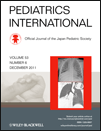Outcomes of very-low-birthweight infants at 3 years of age born in 2003–2004 in Japan
Abstract
Background: The aim of this study was to describe and compare neurodevelopmental outcomes with birthweight (BW) groups at 250-g intervals of very-low-birthweight (VLBW) infants at 3 years of age in a multicenter cohort in Japan.
Methods: A total of 3104 VLBW infants born in 2003 and 2004 registered in a NICU-network database were followed in the study. Neurodevelopmental impairment (NDI) was defined as any of the following impairments: cerebral palsy, unilateral or bilateral blindness, severe hearing impairment, or developmental delay; a developmental quotient (DQ) <70 measured using the Kyoto Scale of Psychological Development test or judged by physicians in infants without the test.
Results: A total of 257 infants died and follow-up data were obtained from 1826 infants. Of the 1826 infants, 155 (8.5%) had cerebral palsy, 25 (1.4%) had visual impairment, and 12 (0.7%) had hearing impairment. Of the 1197 infants in whom DQ was measured, 184 (15.4%) had DQ < 70. The proportion of NDI in the evaluated infants was 19.2% (n= 350), ranging from 11.9% (BW 1251–1500 g) to 42.0% (BW ≤ 500 g). Odds ratios (95%CI) of NDI or death against the group BW 1251–1500 g were 20.62 (13.29–31.97) in BW ≤ 500 g, 7.25 (5.45–9.64) in BW 501–750 g, 2.85 (2.12–3.82) in BW 751–1000 g and 1.18 (0.85–1.64) in BW 1001–1250 g.
Conclusion: The increasing proportion of NDI or death, an indicator of adverse outcome, was associated with decrement in the BW of the groups. Although we have to consider a bias due to loss of follow-up data, the incidence of NDI was similar to previous overseas cohort studies despite the higher survival proportion in our study.




